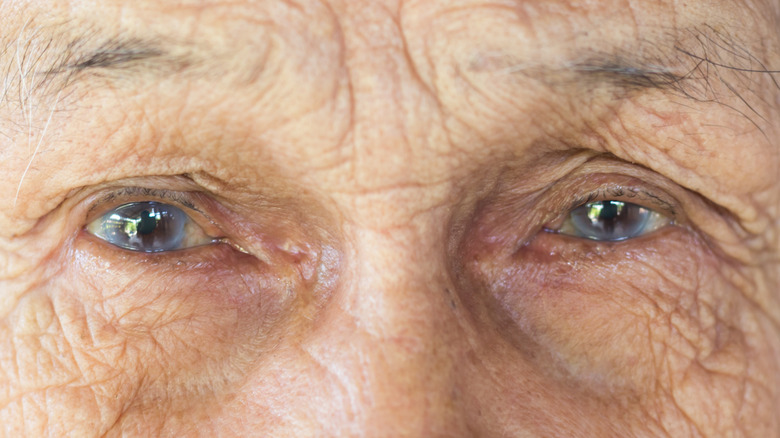Eye Problems That LASIK Surgery Cannot Correct
Laser-assisted in situ keratomileusis surgery, also known as LASIK, is a type of laser-driven procedure used to correct eye problems, states the Mayo Clinic. It has only been around for about 50 years, having been invented accidentally in the 1970s by Russian eye surgeon Dr. Svyatoslav Fydorov, according to Laser Eye Center. During the surgery, a laser targets the outer layer of the eyeball, cutting the tissue to correct vision problems resulting from a misshaped cornea. An optometrist may recommend LASIK corrective surgery if a patient wants to avoid prescription eyeglasses and contact lenses (via Mayo Clinic).
The experts at Spindel Eye Associates point out that LASIK surgery is an effective treatment for vision issues that derive from a misshapen cornea. For example, nearsightedness, which results from the cornea becoming too curved, can be corrected with LASIK surgery by targeting the shape of this curve. Those with farsightedness, which is the opposite of nearsightedness, are also great candidates for this surgery. An uneven shape of the cornea, known as astigmatism, is yet one more condition that LASIK surgery can correct. It's important to note that regardless of the condition, a patient needs to be 18 years or older to undergo LASIK treatment. However, not all vision problems can be corrected with this procedure.
In other words, if your vision problem doesn't fall into the above categories, you may not be a candidate for LASIK surgery. Here are the vision problems that can't be corrected by the procedure.
Most eye diseases cannot be corrected with LASIK surgery
Since LASIK surgery deals with refractive issues of the eye or, in other words, misshapen corneas that affect the way light is perceived and translated into images, it is not appropriate for any condition that involves an underlying disease or deeper physical issue, points out Providence Eye & Laser Specialists. This includes cataracts, which are typically seen in older people and cause the lens of the eye to become cloudy, resulting in blurred vision. Fortunately, cataracts are treated with a different surgery, which requires a lens replacement, as per the National Health Service (NHS).
Other eye conditions that are not treatable with LASIK surgery include glaucoma, a disease of the optic nerve, and keratoconus, which is a thinning of the cornea that can be worsened with LASIK treatment, per Providence Eye & Laser Specialists. Amblyopia, a muscle-related issue that causes one eye to wander, is yet one more vision issue that LASIK surgery, unfortunately, cannot improve.
To determine whether or not you are eligible for a LASIK procedure, an eye surgeon will need to do a full work-up that includes measurements of the eye and the overall health of the eye or eyes in question, explains the Mayo Clinic. If surgery is indicated, it is a fairly rapid and painless outpatient procedure that only requires a light sedative for comfort. The patient is awake for the duration of the surgery.


